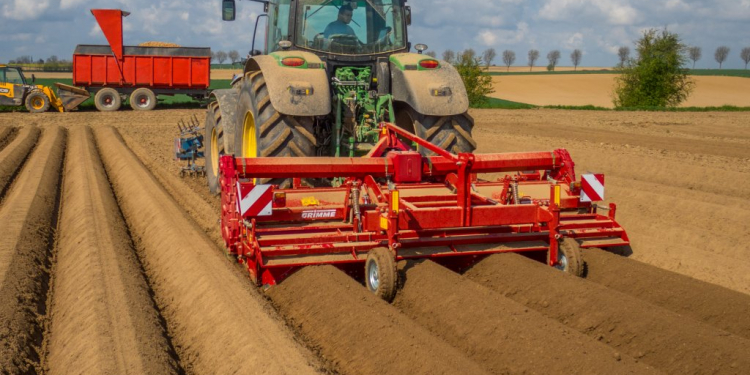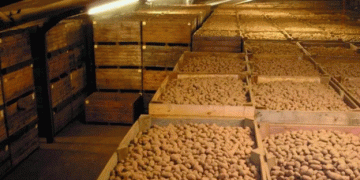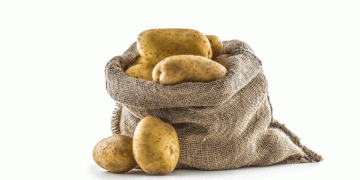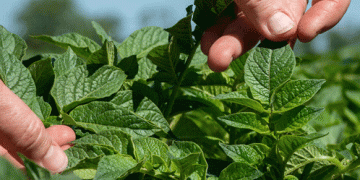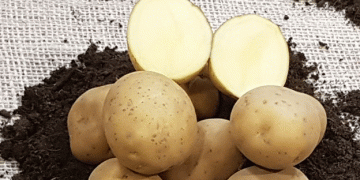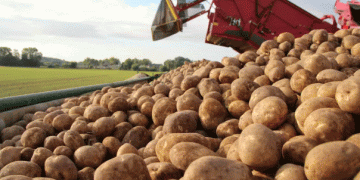Researchers from the University of Groningen planted salt-tolerant seed potatoes on Friday afternoon at the double dike in Bierum in Groningen, a stone’s throw from the Eemshaven. With the six different varieties, from trading house HZPC, they are conducting a pilot on how crops respond to the poor, saline soil.
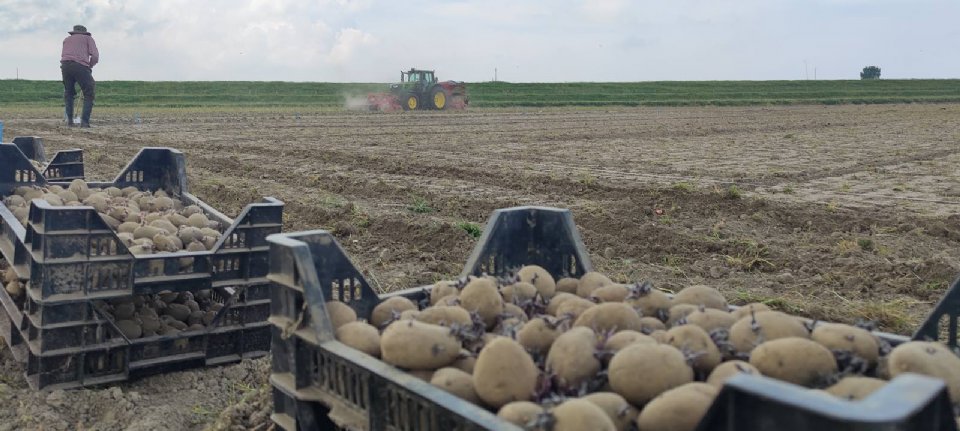
In addition to the seawall in Bierum, a second dike was constructed in 2019 and 2020. This is made from sheared cultivation soil. The soil between the dikes is therefore poor, saline and has a moderate structure. Plant physiologist Jan Henk Venema of the University of Groningen expects that the soil will look like this ‘in twenty to thirty years’ time due to salinisation and drought. That makes the double dyke an interesting experimental area for agriculture.’
The researchers are looking at which fungi and bacteria are in the soil and how they can improve the soil with crop rotation. To get more nitrogen and organic matter in the soil and to improve the structure, legumes and green manure crops are sown Japanese oats and grass clover. They hope this will relieve ‘the stress of the salt’.
‘We are curious which potato varieties will catch on and which will not. Also important is the answer to the question of why one variety can tolerate more salt than another. That knowledge is interesting for potato breeders such as HZPC, with whom we work. This way, the best varieties can be selected for export. After all, the export areas of Groningen seed potatoes are also increasingly faced with salinisation’, says Venema.
Hendriks Giants
Students from Van Hall Larenstein sowed three old Groningen bean varieties, Groninger strogele, Hendriks Reuzen and Bonties. In a greenhouse they previously conducted research into how beans react to salt by adding salt to these beans several times.
‘These are types of beans that traditionally occur in this region. We are investigating whether these beans also want to grow under saline conditions’, says Bouwe Ruiter of the Landbouwe company, with whom the students work together. The straw yellow bean is grown in North Holland, according to Ruiter the yield of 1,200 kilos per hectare is ‘reasonably good’. It is being investigated whether students can make ‘drink beans’ from the beans.
• Read also: Groningen is looking for farmers for saline agriculture
There was no incentive from farmers in the area to start experiments. A call from the province of Groningen also yielded little. Several farmers in the area are against the pilot. According to them, enough good agricultural land has already gone ‘to the buttons’. ‘We are not going to salinize good agricultural land’, they responded earlier.
Ditch is salinizedAccording to Albert Westerdijk, second-year student of arable farming and horticulture at Van Hall Larenstein in Leeuwarden and son of an arable farmer in Startenhuizen in Groningen, it is important to take salinity into account in future business operations. ‘We are increasingly dealing with salt. Our ditch is also salinizing. I think it’s great that I can participate in these kinds of experiments.’
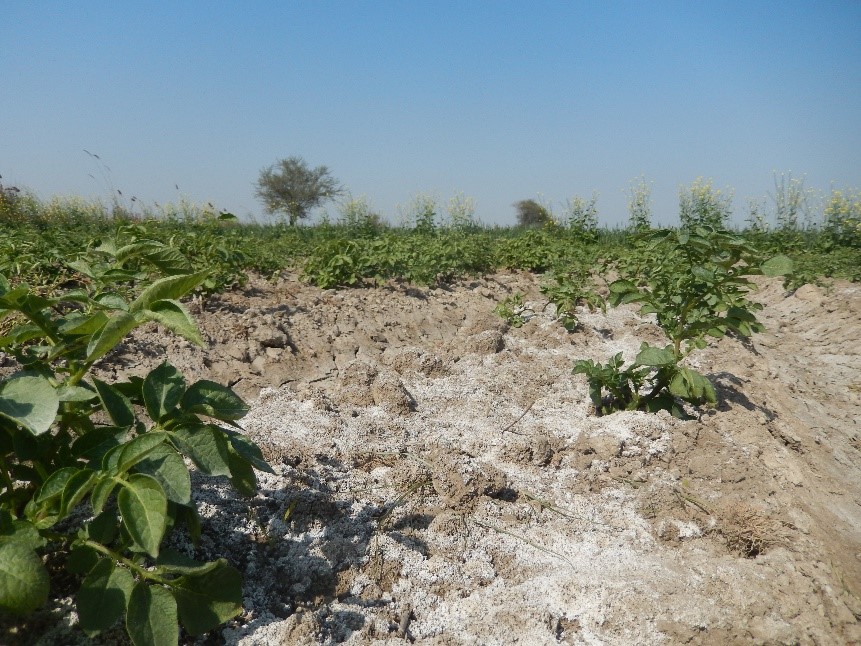
With the double dyke, the Noorderzijlvest water board and the province of Groningen want to gain experience with a new, climate-proof form of dyke improvement, stimulate agricultural innovation and improve the water quality of the Ems-Dollard.In mid-May it was announced via current affairs program Nieuwsuur that the province of Groningen is leasing the land for the double dike from agricultural company Bakker Bierum for 26 years. 8 million euros would have been paid for this. This led to questions from parliamentarians. According to them, the province would have been cheaper if they had bought the land.
With the pilot project potato cultivation, the province wants to investigate whether profitable saline crops can be developed in the area between two dikes. Between the two dykes, approximately 8 hectares are intended for saline cultivation (dry soils) and approximately 20 hectares for aquaculture.
The 12-kilometre-long seawall between Eemshaven and Delfzijl will be reinforced to guarantee the safety of the inhabitants of Groningen, the province indicates.
